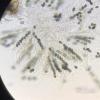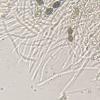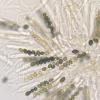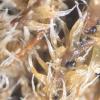
21-12-2025 09:32
Hello.A tiny ascomycete found embedded in wood in

21-12-2025 21:32
Pol DebaenstHello, Garden, Burgweg 19, Veurne, BelgiumOn 10/1

22-12-2025 23:38
Patrice TANCHAUDBonsoir, récolte sur un mur en pierre, apothéci

22-12-2025 00:47
Patrice TANCHAUDBonsoir, récolte à proximité du milieu dunaire

21-12-2025 21:40
Isabelle CharissouBonjour, j'aimerais connaitre les références de

20-12-2025 23:08
Patrice TANCHAUDBonsoir, récolte sur sol sablonneux dans l'arri�
 Found this asco on Racomitrium, the moss was dead or nearly so.
Found this asco on Racomitrium, the moss was dead or nearly so.Spores with a germslit, and it seems like it have a thin gealcoating.
14x8
13x9
11x7,5
12x7,5
12x8
11x8
12x8
Asci is lugols and 10koh+Lugols negative
Parafyses septate.
Anyone have an Idea about genus?
Regards

perhaps a Coniochaeta?
Best regards, Lothar

Yes was thinking of that genus, but was not sure.
the whole fruit body have setae.
there is a key i see, but is it many species who has moss as substrate?
Regards

Hello Robin,
maybe C. ligniaria?
The moss is fully bleached - maybe this has a reason. Perhaps manure or urine of an animal?
Coniochaeta-species usually grow on dung or wood, as nutrient-loving saprobes. Moss as substrate is unusual, but as the species are quite polyphageous perhaps not a wonder - and for me it is unlikely that there are species of this genus that are (exclusively) bryophilous.
Best, Lothar



